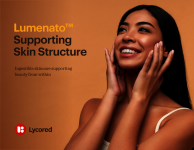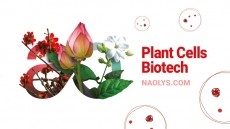Attractiveness and self-confidence: Localism key to cracking lucrative Middle East beauty market, finds study
![Self-confidence-boosting beauty products are popular amongst Arab women in the Middle East, but multinational marketing campaigns don't always hold appeal [Getty Images]](/var/wrbm_gb_food_pharma/storage/images/_aliases/wrbm_large/publications/cosmetics/cosmeticsdesign-europe.com/article/2022/08/11/middle-east-beauty-trends-see-attractiveness-pigment-and-ageing-key-finds-study/15671709-1-eng-GB/Middle-East-beauty-trends-see-attractiveness-pigment-and-ageing-key-finds-study.jpg)
Writing in Cosmetic Dermatology, a team of researchers conducted a cross-sectional analysis exploring the quality of life of cosmetics users from eight Arab countries in the Middle East. The study was conducted between June and November in 2021 among adults in Iraq, Kuwait, Qatar, Oman, Palestine, Lebanon, Jordan, and Saudi Arabia. Most were female (71.38%), single (52.63%) and tertiary educated (70.94%).
Findings showed the broader liberalising thrust among Arab populations mean more women – especially single women – were interested in what cosmetics could do for their appearance and sense of wellbeing.
Attractiveness and desirability key to ME beauty
The study found the two primary reasons Arab women applied cosmetics was to boost their attractiveness and desirability and raise their self-confidence. And one of the most potent self-confidence-boosting cosmetic uses was to correct hair and skin problems often caused by desert climates across the Middle East.
“Most Middle East countries have extreme weather with summers with intense heat waves and humidity, leading to excessive sweating and skin sensitivities,” Dr Ali Haider, lead researcher from the School of Pharmacy at Monash University in Malaysia, told CosmeticsDesign-Europe.
“When they find perfumes and antiperspirants which work optimally for them, they would be more self-confident and comfortable in social settings,” Haider said.
However, when considering five quality of life domains defined by the study – social life, self-confidence, mood, energy and attractiveness – the study found cosmetics did not contribute much to overall quality of life (QOL) amongst female Middle Eastern beauty consumers.
Multinational marketing does not always connect
Findings also showed that marketing claims and campaigns from multinational cosmetic firms that may have been a big hit in Western countries did not always connect with Arab women, especially those with dry or dark skin.
“The use of cosmetics among the Arab population should be from an informed perspective of their specific needs instead of conforming to the viral trends pedalled by influencers and bloggers on social media, which might be irrelevant for them,” the researchers wrote.
Western-style campaigns that linked cosmetics use with ethereal quality of life gains had limited appeal among Arab women, but more nuanced campaigns had massive potential, they said
Dr Haider added: “If luxury brands can adapt to the local market, they might dominate the local brands.”
“The cosmetics users are always looking for products which are deemed to be the most effective and have a good reputation, thus they might gravitate towards switching from local brands to these luxury brands,” he said.
Based on findings, brands that failed to deeply understand regional skin tone and type, and fragrance preferences, would struggle to gain exposure and traction in Middle Eastern countries, he said.
Surprising tones: Pigment matters
Dr Haider said the study’s revelations around skin pigmentation had surprised his team.
“The study findings indicate that skin tone plays a significant role among cosmetic users, where users’ skin tone lightens from less fair to very fair – by applying cosmetics – their five domains of quality of life increase,” Haider said.
“Surprisingly, it seems that the erroneous belief that one skin tone is better than the other still exists. In contrast, Western women with very fair skin tend to tan their skin as much as they can to look prettier and more attractive.”
Middle Eastern cosmetics users were also typically older than Western cosmetics users – with an average age of 34 versus 24 in the West – as they tended to gain a sense of independence and self-empowerment at a later age. And this meant they were open to “experimenting with different cosmetics”, according to the study, with usage becoming a priority as they aged, particularly products targeting the effects of ageing.
The study also detected an urban versus provincial bias.
“Urban residents also use cosmetics far more than the rural residents and this is partially influenced by the proximity to shopping malls and the higher interest in hygiene and aesthetics, which is popular in urban residences,” the researchers wrote.
Source: Journal of Cosmetic Dermatology
Published online ahead of print doi: 10.1111/jocd.15085
Title: "Exploring the quality of life of cosmetic users: A cross-sectional analysis from eight Arab countries in the Middle East"
Authors: Ali Haider Mohammed MD et al.
![The most-read stories on the big-name beauty brands of the region. [P&G / Shopee]](/var/wrbm_gb_food_pharma/storage/images/_aliases/wrbm_medium/publications/cosmetics/cosmeticsdesign-asia.com/headlines/brand-innovation/brand-story-the-recent-apac-developments-from-the-biggest-names-in-beauty8/15687921-1-eng-GB/Brand-story-The-recent-APAC-developments-from-the-biggest-names-in-beauty.jpg)
![TikTok Shop in South East Asia could possibly accelerate the regional growth of social commerce. [Getty Images]](/var/wrbm_gb_food_pharma/storage/images/_aliases/wrbm_medium/publications/cosmetics/cosmeticsdesign-asia.com/article/2022/08/01/what-the-presence-of-tiktok-shop-in-sea-means-for-beauty-and-social-commerce/15625938-1-eng-GB/What-the-presence-of-TikTok-Shop-in-SEA-means-for-beauty-and-social-commerce.jpg)
![The Good Glamm Group is set to make its first foray internationally into the Middle East in August. [The Mom's Co.]](/var/wrbm_gb_food_pharma/storage/images/_aliases/wrbm_medium/publications/cosmetics/cosmeticsdesign-asia.com/headlines/business-financial/the-good-glamm-group-s-international-venture-targets-middle-east-sea/15625353-1-eng-GB/The-Good-Glamm-Group-s-international-venture-targets-Middle-East-SEA.jpg)
![Pilgrim's first 24K gold line comprising oil, serum and facial mask was inspired by Korean cosmetics. [Pilgrim]](/var/wrbm_gb_food_pharma/storage/images/_aliases/wrbm_medium/publications/cosmetics/cosmeticsdesign-asia.com/headlines/business-financial/indian-beauty-firm-pilgrim-eyes-middle-east-markets-offline-expansion-by-2023/15566936-1-eng-GB/Indian-beauty-firm-Pilgrim-eyes-Middle-East-markets-offline-expansion-by-2023.jpg)





![Latest developments from the South Korean beauty market. [Getty Images]](/var/wrbm_gb_food_pharma/storage/images/_aliases/wrbm_tiny/publications/cosmetics/cosmeticsdesign-asia.com/headlines/brand-innovation/korea-focus-able-c-c-kolmar-and-more-in-this-k-beauty-round-up/17357973-1-eng-GB/Korea-focus-Able-C-C-Kolmar-and-more-in-this-K-beauty-round-up.jpg)

![Able C&C has furthered its partnership with Japanese discount chain Daiso with new makeup launch. [A'pieu]](/var/wrbm_gb_food_pharma/storage/images/_aliases/wrbm_tiny/publications/cosmetics/cosmeticsdesign-asia.com/headlines/brand-innovation/a-pieu-and-daiso-launch-exclusive-2-makeup-line/17339117-1-eng-GB/A-pieu-and-Daiso-launch-exclusive-2-makeup-line.jpg)
![Down Under Enterprises is setting sights on the Asian market as environmental sustainability and traceability become increasingly important. [Getty Images]](/var/wrbm_gb_food_pharma/storage/images/_aliases/wrbm_tiny/publications/cosmetics/cosmeticsdesign-asia.com/headlines/market-trends/down-under-enterprises-shifts-focus-to-china-as-environmental-sustainability-traceability-come-into-the-spotlight/17304932-1-eng-GB/Down-Under-Enterprises-shifts-focus-to-China-as-environmental-sustainability-traceability-come-into-the-spotlight.jpg)
![News updates from Shiseido, Dr.Ci:Labo, Sephora, and more. [Shiseido]](/var/wrbm_gb_food_pharma/storage/images/_aliases/wrbm_tiny/publications/cosmetics/cosmeticsdesign-asia.com/headlines/brand-innovation/updates-from-shiseido-dr.ci-labo-sephora-and-more/17334944-1-eng-GB/Updates-from-Shiseido-Dr.Ci-Labo-Sephora-and-more.jpg)

![Clariant has underscored the importance of localisation strategies and distribution capabilities in China with beauty trends evolving at a rapid pace. [Getty Images]](/var/wrbm_gb_food_pharma/storage/images/_aliases/wrbm_tiny/publications/cosmetics/cosmeticsdesign-asia.com/article/2024/04/16/clariant-emphasises-importance-of-localisation-in-the-era-of-viral-trends/17327969-1-eng-GB/Clariant-emphasises-importance-of-localisation-in-the-era-of-viral-trends.jpg)



